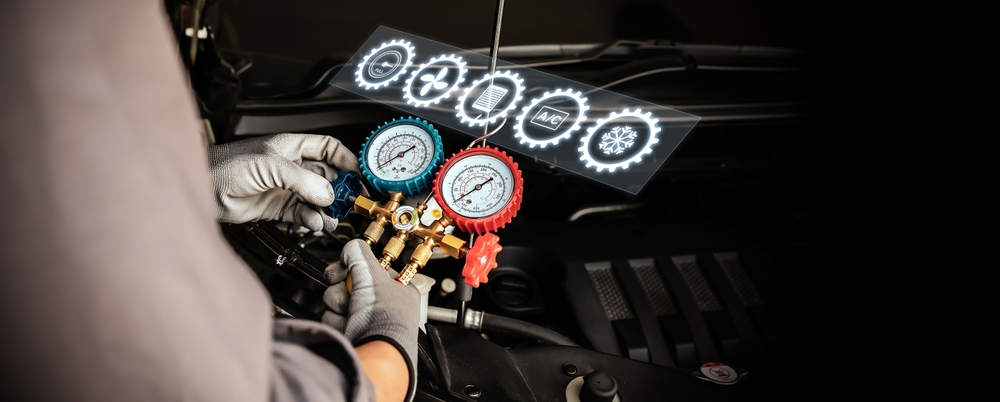Hands-On Auto Technician Training to Launch Your Career
The automotive world is becoming more electronic and complex, with sensors, advanced driver systems, and hybrid drivetrains now standard. If you enjoy diagnosing problems and working with vehicles, formal auto technician training can turn that interest into a reliable career. Discover what training covers, the career paths available, program lengths and certifications, and the practical skills employers want in modern vehicle repair and diagnostics.

Introduction: Modern cars and light trucks are packed with advanced electronics, networked systems, and alternative powertrains, so skilled service technicians are increasingly valuable. Formal auto technician training combines classroom instruction with hands-on lab work to build both the theoretical understanding and practical abilities needed to diagnose, service, and repair today’s vehicles.
How Training Is Organized: Most programs use a blended approach: instructors teach core automotive principles, while students practice those concepts on real vehicles under supervision. This mix helps trainees learn to use diagnostic equipment, perform routine maintenance, and complete complex repairs safely. Mentoring from experienced technicians accelerates skill development and teaches safe shop procedures and effective troubleshooting habits.
Why Enrolling in a Recognized Program Matters: A passion for cars and home repairs is a good start, but modern service work requires knowledge of onboard computers, drive-by-wire systems, and hybrid or electric powertrains. Formal education provides structured learning about how systems operate and why they fail, which leads to methodical diagnosis rather than guesswork.
Employers commonly prefer candidates who graduated from accredited programs because those credentials indicate consistent training and professional commitment. Plus, the auto industry evolves rapidly, so continuing education and manufacturer-specific training are essential to keep skills current.
Career Paths After Training: Graduating from a mechanic program opens multiple job options, including: 1. Dealership service departments 2. Independent and neighborhood repair shops 3. Fleet maintenance and commercial vehicle services 4. Auto parts retailers and technical support roles 5. Specialized repair centers (transmission, brake, electrical, or AC work) 6. Mobile technicians providing on-site repairs
With experience and advanced credentials, technicians can move into supervisory and management roles such as shop foreman or service manager, or start their own repair business. Specializing—for example, in hybrid/electric systems, performance tuning, or classic car restoration—can create niche expertise and boost earnings.
Program Lengths and Typical Certifications: Different training options suit different goals and timelines: • Certificate programs: 6 to 12 months — prepare you for entry-level technician roles. • Associate degrees: roughly 2 years — Associate of Applied Science in Automotive Technology, broader academic and technical foundation. • Apprenticeships: 2 to 4 years — on-the-job training leading to journey-level recognition in some trades. • Bachelor’s degrees: about 4 years — B.S. in Automotive or Engineering Technology, useful for advanced technical or managerial paths.
Short, focused courses can get you into the workforce quickly, while longer programs often improve job prospects and salary potential. Many technicians also pursue manufacturer certifications and industry credentials throughout their careers to stay up to date.
Tuition and Cost Note: Program costs differ by school, location, and credential level. This overview does not list specific prices. Prospective students should research current tuition, fees, and financial aid or scholarship options when evaluating programs.
Essential Skills for Success: Technical training is crucial, but personal abilities matter just as much. Key competencies include: 1. Mechanical aptitude — an intuitive grasp of how parts and systems work together. 2. Problem-solving — systematic thinking and persistence to trace faults and repairs. 3. Attention to detail — accurate work reduces repeat service and warranty claims. 4. Manual dexterity — the ability to work in tight spaces and handle small components. 5. Communication — clearly explaining diagnoses and repair plans to customers and teammates. 6. Adaptability — readiness to learn new diagnostic tools, software updates, and vehicle technologies.
Cultivating these skills during a training program will make new technicians more effective and better prepared for advancement.
Conclusion: Pursuing formal automotive technician training is a practical path into a dynamic, in-demand field. By pairing classroom theory with hands-on experience, these programs prepare aspiring technicians to diagnose and repair contemporary vehicles confidently. Whether your goal is to work at a dealership, run your own shop, or specialize in cutting-edge systems like hybrids and electrics, structured training plus ongoing learning are the keys to a rewarding career in vehicle repair.






